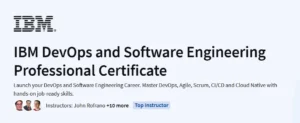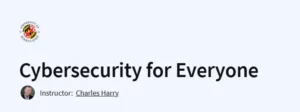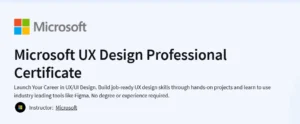What you will learn in Using Python to Access Web Data Course
Use regular expressions to extract data from strings.
Understand the protocols web browsers use to retrieve documents and web apps.
Retrieve data from websites and APIs using Python.
Work with XML (eXtensible Markup Language) data.
Program Overview
Module 1: Getting Started
⏳ 3 hours
- Install Python and a text editor. Transition from the browser-based Python environment to a local setup to handle more complex programs.
Module 2: Regular Expressions (Chapter 11)
⏳ 3 hours
- Learn to use regular expressions to search and extract data from strings efficiently.
Module 3: Networks and Sockets (Chapter 12)
⏳ 3 hours
- Understand how web browsers retrieve documents and how applications interact with APIs using network protocols.
Module 4: Programs that Surf the Web (Chapter 12)
⏳ 3 hours
- Use Python to retrieve data from websites and APIs over the Internet.
Module 5: Web Services and XML (Chapter 13)
⏳ 3 hours
- Retrieve and parse XML (eXtensible Markup Language) data.
Module 6: JSON and the REST Architecture (Chapter 13)
⏳ 3 hours
- Work with Application Program Interfaces / Web Services using the JavaScript Object Notation (JSON) data format.
Get certificate
Job Outlook
Completing this course prepares you for roles such as Data Analyst, Web Developer, or Python Developer.
The skills acquired are applicable across various industries that utilize web data extraction and analysis.
Enhance your employability by gaining practical experience in web scraping and data parsing using Python.
Specification: Using Python to Access Web Data
|
FAQs
- Some basic familiarity with Python syntax (like variables, loops, and functions) is helpful.
- If you’re an absolute beginner, you may find the pace challenging but manageable with extra effort.
- You don’t need to be an expert—this course is designed for learners who want to bridge Python with real-world web data applications.
- Taking an introductory Python course before this can make your experience easier and more rewarding.
- You will work with data from APIs, websites, and structured formats like JSON and XML.
- Examples may include pulling data from social media platforms, weather services, or online databases.
- You’ll practice retrieving, parsing, and cleaning data so it can be used effectively in projects.
- These skills can later be applied to a wide range of fields like data science, automation, and machine learning.
- Yes, you will learn techniques to access and extract information from web pages.
- It covers parsing HTML, working with libraries, and managing structured data.
- The focus is on safe and ethical practices while retrieving information.
- While not a full-fledged web scraping bootcamp, it gives you strong foundations to build your own scrapers later.
- Web data is widely used in industries like finance, marketing, and software development.
- Skills from this course can help automate workflows, analyze trends, or power dashboards.
- The ability to access APIs and online resources is critical for modern applications.
- It’s a stepping stone toward careers in data science, machine learning, and backend development.
- Yes, you can apply the skills to personal projects such as collecting stock prices, monitoring news, or building hobby apps.
- It helps you automate repetitive tasks and save time.
- You can gather insights from online data that would otherwise take hours to compile manually.
- These projects can also enhance your portfolio, showcasing real-world problem-solving.





